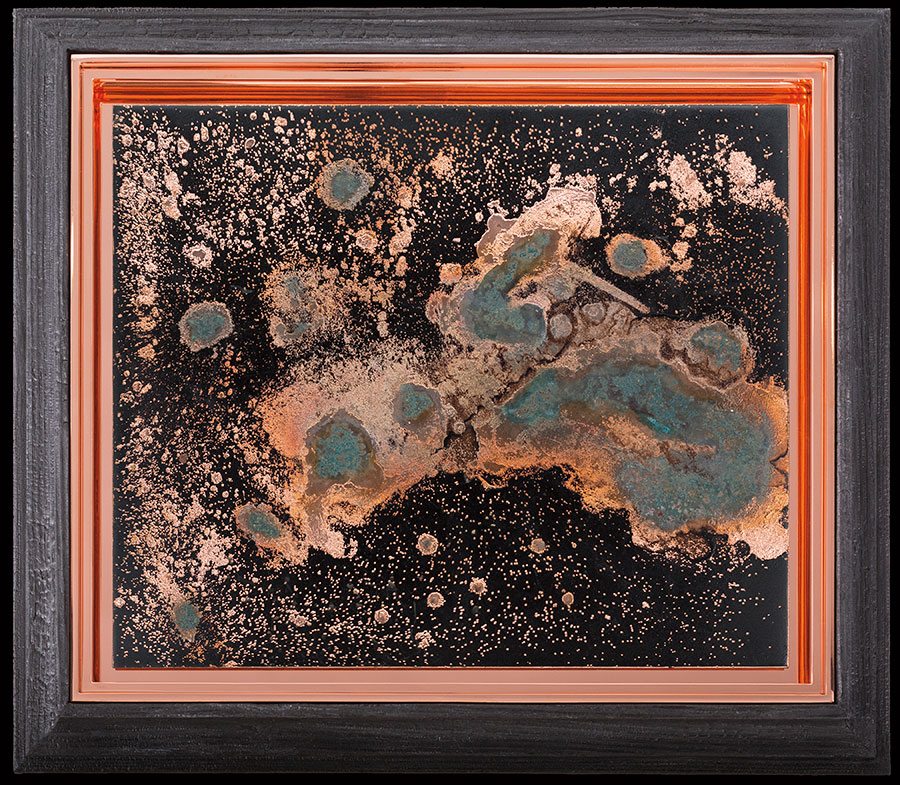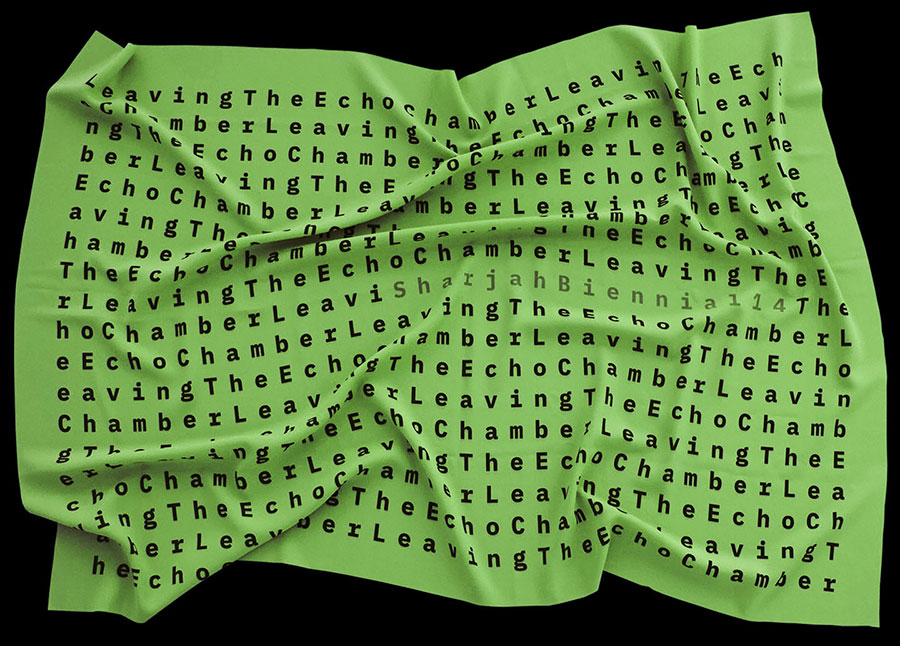What the Art World is Looking Forward to in 2019 Across Asia, the Middle East and Australasia
From biennales to solo projects, and the responsibilities of arts institutions in the face of resurgent nationalisms: the low-down on what to look out for this year
From biennales to solo projects, and the responsibilities of arts institutions in the face of resurgent nationalisms: the low-down on what to look out for this year


Alexie Glass-Cantor is the director of Artspace, Sydney, Australia.
2019 promises a strong year of diverse offerings from alternative and independent spaces across Australasia and its neighbours, as well as large museum shows and biennials. There is a strong sense of social, cultural and political themes starting with ‘ARUS BALIK – From Below the Wind to Above the Wind and Back Again’ at NTU Centre for Contemporary Art, Singapore; ‘Shapes of Knowledge’ at Monash Museum University of Art, Melbourne; ‘One a Day’ at Art Sonje Center, Seoul; and ‘Layover’ at Artspace, Auckland. A number of benchmark solo projects display an investment in contemporary artists with a strong approach to intergenerational practices including ‘Lower Power’, Marco Fusinato at Perth Institute of Performing Arts; ‘Qiu Zhijie: Mappa Mundi’ at Ullens Centre for Contemporary Art, Beijing; ‘Current Iterations’, Dale Harding, Institute of Modern Art, Brisbane; and ‘Tom Nicholson: Public Meeting’, Australian Centre for Contemporary Art, Melbourne. Biennales across the region show strength through a depth of rigour and scholarship, which will be enormously rewarding for audiences. Further afield, highlights include ‘Flight Interrupted: Eco-leaks from the Invasion Desk’, Karachi Biennale 19, ‘The Seventh Continent’, Istanbul Biennial 19 and ‘Leaving the Echo Chamber’, Sharjah Biennial 19.

Alvin Li is a writer and contributing editor of frieze, based in Shanghai, China.
I’m most excited about ‘3x3x6’, Shu Lea Cheang’s forthcoming solo presentation for the Taipei Pavilion at the 58th Venice Biennale, curated by Paul B. Preciado. Cheang will take the Palazzo delle Prigioni, a former prison and the location of the Taipei Pavilion, as a point of departure to develop a site-specific installation that inverts the technologies of confinement and control in hyper-surveilled contemporary society to, as Preciado writes in the press release, ‘reinvent desire and pleasure beyond hegemonic norms’.
Australian performance artist Justin Shoulder, best known for his ‘Ex Nilalang’ series (2015–ongoing), produced under the moniker Club Ate (a collaborative project with Bhenji Ra) and the performance body of work Carrion (2017–ongoing), is developing a new piece inspired by Filipino pageantry, diasporic horror myths and queer ecologies. Tentatively titled Skyworld Transformer, the work will debut during his residency at Palais de Tokyo in Paris in June.
In Hong Kong, while the opening of M+ is delayed, again, until 2020, Tai Kwun Contemporary, the contemporary art-focused wing of Tai Kwun Center for Heritage and Arts, has been organizing some pretty impressive exhibitions and public programming since its inauguration last August. From 11 to 13 January, Tai Kwun will launch ‘Booked: Tai Kwun Contemporary’s Hong Kong Art Book Fair’, the inaugural edition of an international art book fair with a strong regional focus. Nearly 60 publishing initiatives will join the fair.
Matthew Barney’s exhibition ‘Redoubt’ will travel from Yale University Gallery in New Haven to UCCA in Beijing in November 2019, marking his first solo presentation in China. The exhibition will feature Barney’s latest body of work (2016–19), including the premiere of the two-hour-long titular film.
After 3 consecutive editions, Hugo Boss Asia Art, a biannual award focusing on artistic practices from Greater China and Southeast Asia, has established itself as the foremost competition in the region. The fourth edition will again be held at Rockbund Art Museum (RAM) in Shanghai this fall, curated by RAM’s Senior Curator Billy Tang.

Andrew Maerkle is a writer and editor based in Tokyo.
Among the next round of periodic art festivals in Japan for 2019 are the fourth Aichi Triennale, the fourth Setouchi Triennale, and the second Okayama Art Summit. Of these, I am most looking forward to Aichi, directed by the journalist and media activist Daisuke Tsuda. Addressing the theme ‘Taming Y/Our Passion’, Tsuda and his team of curators will install works by artists including Minouk Lim and Koki Tanaka across multiple venues in the prefectural capital Nagoya and in Toyota. A smaller-scale event, the Okayama Art Summit has made a name for itself as a platform for international stars to dabble in exhibition making: this year’s edition is directed by Pierre Huyghe after Liam Gillick oversaw the inaugural edition in 2016. About two hours from Nagoya by bullet train, Okayama is on the way to the Setouchi Triennale, where participants will be installing site-specific projects across several islands in the Seto Inland Sea.
Back in Tokyo, one of the main events will be the reopening of the Museum of Contemporary Art following its multiyear renovation. The first exhibition, ‘Weavers of Worlds: A Century of Flux in Japanese Modern/Contemporary Art’, kicks off in late March, but also of note on the calendar is an exhibition of the seminal multimedia performance collective Dumb Type, curated by Yuko Hasegawa, which will build on a presentation at Pompidou Metz in 2018.
While the spread of video and new media has been a game changer in bringing marginalized voices to the international art circuit, we should not forget the importance of other mediums in forging alternate networks of expression and solidarity, which is why I’m excited to see the survey ‘Blaze Carved in Darkness: Woodcut Movements in Asia 1930s–2010s’ when it tours to Arts Maebashi from the Fukuoka Asian Art Museum, where it was organized by chief curator Kuroda Raiji.
I’m also curious about how independent art organizations will respond in the run-up to the Tokyo Olympics, which are now less than two years away. There should be an influx of government spending on art and cultural projects but, as in many other parts of the world, there is also a rising undercurrent of nationalist sentiment, authoritarian politics and historical whitewashing. (Anticipating the conversion of the Self-Defense Forces into a full-fledged military, the LDP government just placed an order for some 100 F-35 fighter jets from the United States, totaling some $8.8 billion, while the English-language Japan Times announced that it will no longer use the terms ‘forced labour’ and ‘comfort women’ in reporting on the victims of human trafficking committed by the Empire of Japan.) Will arts organizers be asked to censor themselves in exchange for taking the money? I hope that groups such as Arts Initiative Tokyo, Asakusa, BlanClass, CAMP and Theater Commons Tokyo can do their part to stake out space for critical discourse.
As for the world at large: How can we come up with new ways for talking about human rights–environmental protection–nuclear disarmament in the realm of symbols so that it is appreciated with renewed urgency in the realm of consequences? Doing so might entail breaking down comfortable habits of thought and stepping outside of structural dependencies: maybe even reinventing the idea of art itself. Now I’d like to see that!

Reema Salha Fadda is a writer and editor based in London, UK.
With the new year inviting us to look forward, I find myself migrating towards publications and exhibition that are grappling with the politics of past cultural erasures. This is in part inspired by one of the stand-out shows of 2018: the archival and documentary exhibition ‘Past Disquiet’, curated by Kristine Khouri and Rasha Salti and held at the Sursock Museum in Beirut. The exhibition took as its starting point the previously overlooked exhibition history of the International Art Exhibition for Palestine held at the Beirut Arab University in 1978. Enabled by international artistic solidarity networks in France, Chile and artists across the Arabic-speaking world who collectively supported anti-imperial struggles, the exhibition wove together a transnational art historical narrative to shed light on artistic solidarity efforts during the 60s and 70s. Khouri and Salti put together an edited collection of essays, interviews and primary texts that builds on their ten years of ongoing research. Published at the end of last year and with contributions from academics, artists and practitioners, Past Disquiet: Artists, International Solidarity and Museums in Exile (2018) offers a crucial resource for anyone interested in the history of anti-colonial artistic resistance, as well as contemporary discussions around decolonizing culture.
In keeping with the theme of re-presenting the past, the forthcoming exhibition ‘A National Monument’ at Dar El Nimer in Beirut – a collaboration between Visualizing Palestine and Marwan Rechmawi – will present a series of three-dimensional installations based on British survey maps during the pre-1948 British Mandate period. Looking back to historic Palestine’s erased cartography offers a counterpoint to think through its contemporary border politics and shrinking territory.
My final recommendation, more monumental in scale and expansive in its reach, is this year’s Sharjah Biennale, which has become one of the most significant calendrical events in the Arab region. Its 14th edition, ‘Leaving the Echo Chamber’, promises an ambitious programme that includes three curatorial responses from Zoe Butt, Omar Kholeif and Clare Tancons, to consider the role of artistic production as both a site of mobility and ‘creative reckoning’ (to borrow a term from anthropologist Jessica Winegar) in an uncertain age of rapid technological change, political compromises and ongoing cultural erasures.
Main image: Nakahara Minoru, Baby Cedar, 1947, oil on canvas. Courtesy: Museum of Contemporary Art Tokyo





















